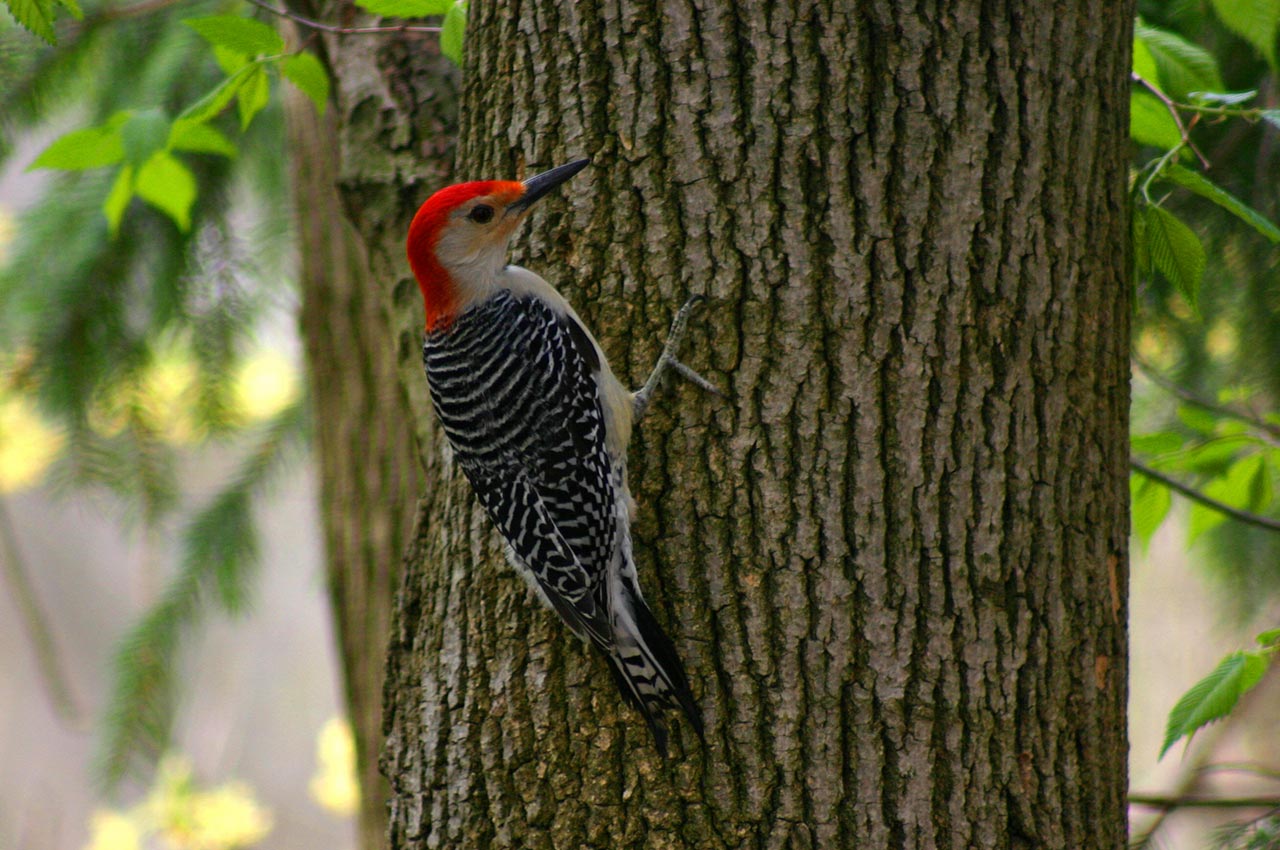Woodpeckers: A Comprehensive Guide to Comprehending These Distinct Birds
Woodpeckers, with their unique habits and physical qualities, have long astounded the inquisitiveness of ornithologists and nature fanatics alike. As we explore the elaborate composition, diverse types, and ecological importance of woodpeckers, a much deeper gratitude for these special birds and the secrets they hold unravels.

Woodpeckers' Drumming Actions
Woodpeckers display a balanced and exact drumming actions that offers various crucial features in their day-to-days live. This actions is primarily connected with communication, area protection, and foraging. The unique drumming sound is produced by the quick pecking of their beaks against tough surfaces such as tree trunks, branches, or also steel items.
Communication is a critical element of woodpecker habits, and drumming plays a considerable duty in this process. Woodpeckers make use of drumming to develop their visibility, draw in friends, and maintain call with their partners and offspring. The frequency, strength, and period of drumming series share details messages to other woodpeckers in the location.
Along with interaction, woodpeckers make use of drumming habits for area protection. Woodpeckers in Florida. The loud and repeated drumming offers as an alerting to potential trespassers, indicating that the location is currently declared. By establishing their territory through drumming, woodpeckers minimize the probability of disputes over useful sources such as food and nesting sites
Furthermore, woodpeckers additionally utilize drumming as a foraging method. The rhythmic pecking aids them locate pests concealing beneath the bark of trees by creating vibrations that interrupt the prey's camouflage. This behavior showcases the adaptability and resourcefulness of woodpeckers in utilizing their drumming abilities for multiple important functions.
Special Adaptations for Tree Climbing
Having actually grasped the art of drumming to interact, defend area, and forage, woodpeckers have advanced one-of-a-kind adjustments that facilitate their remarkable climbing up abilities in their arboreal habitats. Woodpeckers have zygodactyl feet, with 2 toes pointing ahead and two toes aiming in reverse. These tail feathers provide security and balance, making it possible for woodpeckers to maneuver up tree trunks with precision and dexterity.
Additionally, woodpeckers have effective neck muscles and a special skull structure that aid in their climbing abilities. Their solid neck muscle mass allow them to swiftly peck at tree bark without experiencing whiplash, while their thick head and tiny brain function as shock absorbers, protecting them from the influence of repeated drumming. These adjustments jointly allow woodpeckers to navigate the vertical globe of trees with efficiency and elegance.

Function of Woodpeckers in Ecosystems
By foraging for bugs under the bark of trees, woodpeckers assist regulate bug populaces, avoiding outbreaks that might hurt the general health and wellness of the woodland. Additionally, woodpeckers produce tooth cavities in trees that serve as essential nesting websites for a range of various other bird species, promoting biodiversity within the ecological community.
Moreover, the drumming and vocalizations of woodpeckers play a crucial function in communication and area establishment. These noises not only offer to draw in friends yet likewise assist define limits in between various woodpecker regions, lowering conflicts and promoting an unified visit this web-site conjunction within the woodland community. On the whole, the existence of woodpeckers in forest ecosystems highlights their importance as keystone species, affecting the characteristics and functioning of these habitats in multifaceted means.
Composition: Specialized Beaks and Feet
In the intricate internet of woodland ecosystems, the specialized beaks and feet of woodpeckers are crucial adaptations that allow them to satisfy their crucial environmental roles. Woodpeckers possess one-of-a-kind anatomical attributes that are specifically created to aid them in their foraging and nesting habits.
One of the most distinguishing characteristic of woodpeckers is their strong, chisel-shaped beaks. These beaks are completely adapted for boring right into wood to discover pests, larvae, and sap surprise below the bark of trees. The strong muscular tissues and sturdy structure of their beaks allow woodpeckers to peck at a price of approximately 20 times per secondly without creating damages to their heads.
Additionally, woodpeckers have actually specialized feet that help in their acrobatic climbing up abilities. Their feet have 2 toes aiming forward and two toes directing in reverse, giving a strong hold on upright surface areas (Woodpeckers in Florida). This unique foot arrangement, along with rigid tail feathers that work as an encouraging prop, allows woodpeckers to cling to tree trunks and branches easily while they look for food or excavate nesting cavities
Woodpecker Species Variety
Woodpeckers click to find out more are a diverse team of birds discovered across various communities worldwide, with over 200 known varieties showing adaptations to different settings. Woodpeckers have developed to inhabit an array of atmospheres, from forests and forests to grasslands and deserts, each presenting unique challenges that have influenced the advancement of unique woodpecker species.
Another contributing element to woodpecker varieties diversity is their specialized feeding behaviors. Various species have actually developed to exploit different food sources, such as bugs, tree sap, fruits, and nuts, causing the development of details adaptations in beak form, size, and toughness. These adaptations make it possible for woodpeckers to forage effectively in their corresponding habitats, lowering competition amongst types and advertising niche distinction. Additionally, geographical seclusion and historical aspects have contributed in forming the distribution and variety of woodpecker types, resulting in the vast selection of specialized adjustments seen in these fascinating birds.

Final Thought
In verdict, woodpeckers are fascinating birds that next display unique drumming habits, specialized adaptations for tree climbing, and play crucial roles in ecological communities. With a diverse array of woodpecker species located worldwide, these birds are important for keeping the health and equilibrium of woodlands and forests.